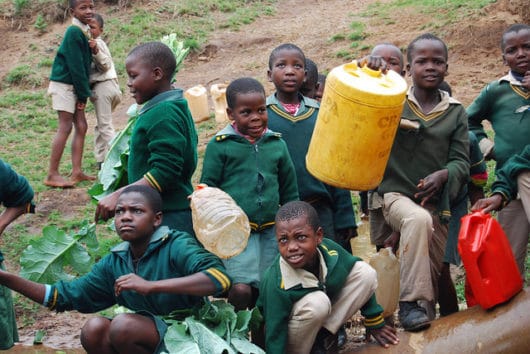Top 5 Facts about Living Conditions in Swaziland

Swaziland has endeavored to increase employment and economic growth. Among these efforts, still more work needs to further these goals and priorities. One area that the country has made progress in is improving living conditions in Swaziland by reducing the number of people living below the poverty line. With continued effort, Swaziland can make positive steps in strengthening its healthcare system, increasing employment rates and economic growth and increasing the retention rate of girls in school. These top 5 facts about living conditions in Swaziland will show where they are succeeding and where they need more work.
Top 5 Facts about Living Conditions in Swaziland
- In Swaziland, unemployment rates, in general, have not changed much in the past few years, hovering around 26 percent. There are further discrepancies between unemployment rates for women. For example, in 2007 and 2010, the rates stayed level around 30 percent. For men, however, the rates between 2007 and 2010 were 24.0 percent and 22.7 percent. There is still more work to be done in increasing youth employment. In fact, Swaziland has one of the highest youth unemployment rates in Africa. The unemployment rate has remained higher than 50 percent since 2007. Specifically, working to reduce youth unemployment is a major part in helping reducing unemployment as a whole. Solutions to decrease youth unemployment are tertiary reforms and increasing vocational and on-the-job training. In addition, adding more growth to the private sector is key to helping to create high paying and productive jobs. Companies like Orange and OpenClassrooms are working to provide digital education to Africa’s youth to help young people find jobs in the tech markets.
- There has been some progress made in the living conditions in Swaziland by reducing the number of people living below the poverty line. According to the Swaziland Household Income and Expenditure Survey, the percentage of people living below the poverty line was 69 percent in 2001. However, the percentage had dropped by more than half to 30 percent in 2015. These numbers represent, on average, 20 percent for those living in urban areas, but for those living in rural areas, it was as high as 37 percent. Reasons for such high poverty rates were the decrease in incomes, the stagnation of private consumption and the decrease in the GDP.
- As a whole, economic growth has declined in Swaziland. Real GDP growth decreased from 1.3 percent in 2016 to 1 percent in 2017. Economic growth was projected to be at 1.5 percent in 2018. Factors that have contributed to the decline in economic growth are low demand from pivotal export market destinations, especially from South Africa and Eurozone. In addition, the sector also experienced a decline in economic growth and a loss of eligibility in status to trade under the African Growth and Opportunity Act Arrangement. Swaziland’s average GDP annual growth rate had been its highest in 1990 at 21 percent, but it dropped significantly down to .7 percent in 2016. Fortunately, the GDP annual growth rate had risen up to 2.3 percent in 2017.
- The healthcare system consists of formal and informal sectors. Health practitioners and general service providers make up the informal sector while industry, private and public health services as well as nongovernmental organizations make up the formal sector. Swaziland puts around 3.8 percent of its GDP towards healthcare, the government providing 65 percent of the money, which is about 2 percent of its GDP. The federal budget was increased from 7 percent in 1998 to 9 percent in 2009.
- There still is more work to be done in closing the gender gap in education. Swaziland’s educational levels are primary education, secondary education, vocational education and tertiary education. Although there is not a great disparity between boy and girls attending primary, dropout rates do tend to rise by year 5 of secondary school. More work needs to be done in increasing the retention rates for both girls and boys in school, although more work is needed for female retention. While there are not as many obstacles for girls starting school, there are numerous obstacles that hinder girls from staying in school. Between the ages of 15 and 19, 50 percent of girls will not have completed secondary school, compared to 39 percent of boys. Some of the obstacles are poverty, the HIV/AIDS pandemic and gender insensitivity. Furthermore, more than two-thirds of families live in poverty, and many find difficulties in paying for school fees and other costs.
These 5 facts about living conditions in Swaziland show that, while there is more work to be done in areas of employment, economic, growth and education, there has been notable progress in helping to improve the living conditions of the people. One area that has seen progress is the reduction of the number of those living below the poverty line. With more effort, Swaziland can see positive developments in helping the lives of all people.
– Daniel McAndrew-Greiner
Photo: Flickr
